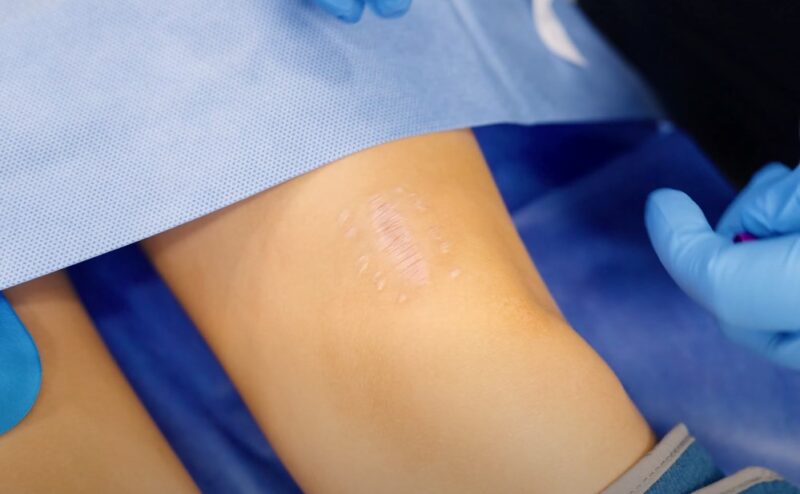Scars on the legs can often be a source of self-consciousness, evoking memories of past injuries, surgeries, or accidents. While they serve as a testament to the body’s remarkable ability to heal, many people seek ways to reduce or eliminate their appearance for both aesthetic and emotional reasons.
With advancements in both natural remedies and medical treatments, achieving smoother and more even-toned legs is within reach.
Now, we will explore various methods to diminish these scars and empower individuals to make informed choices tailored to their needs.
Natural Remedies
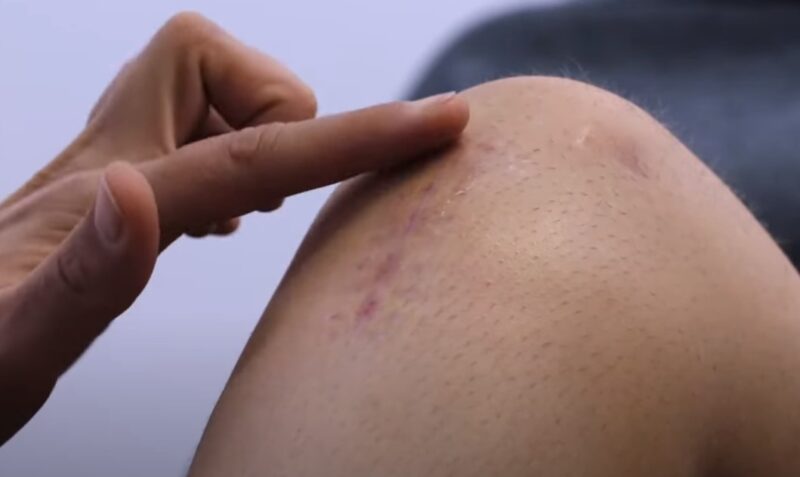
Natural remedies have been used for centuries to treat a variety of skin ailments. From essential oils to herbal concoctions, Mother Nature provides a wealth of ingredients that can aid in the scar reduction process.
Aloe Vera
Aloe Vera is renowned for its healing properties, especially when it comes to skin issues. This succulent plant has been a staple in many households for minor burns and sunburn relief.
- Simply extract the gel from an Aloe Vera leaf and apply it directly onto the scar.
- Leave it on for about 30 minutes before rinsing with cold water.
- Regular application can result in softer, more supple skin, thereby reducing the prominence of scars.
Lemon Juice
Rich in Vitamin C, lemon juice is a natural bleaching agent. It can lighten scars and make them less noticeable, while its acidic nature can help exfoliate the skin.
- Extract fresh juice from a lemon, and apply it directly to the scar using a cotton ball.
- Allow it to sit for 10 minutes and then rinse.
Sun exposure after application can cause skin sensitivity, so it’s advised to use sunscreen or avoid direct sunlight.
Over-The-Counter Treatments
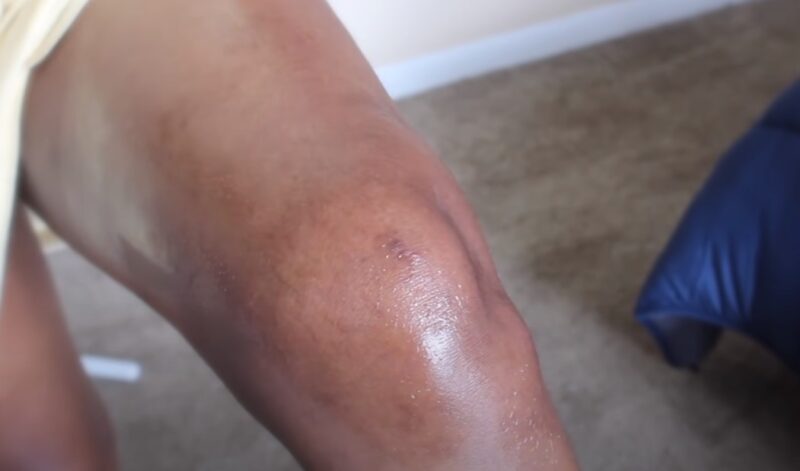
Over-the-counter treatments offer a convenient solution to scar management. With regular use, many people have found significant improvement in the appearance of their scars.
Silicone Gel Sheets
Silicone gel sheets have become a popular solution for scars. These sheets create a moist healing environment which can reduce the appearance of both new and old scars. Simply apply the sheet directly over the scar.
They’re reusable and can be worn for several hours a day. Over time, many users report a noticeable flattening and softening of scars.
Chemical Exfoliants
Exfoliants containing chemicals like alpha-hydroxy acids (AHAs) can help in reducing scars by removing the top layer of skin. This promotes the regeneration of new skin cells. Apply the exfoliant as directed on the product’s label.
As the top layer of skin is shed, newer, healthier skin is revealed. It’s important to note that while using chemical exfoliants, sun protection is a must.
Professional Treatments
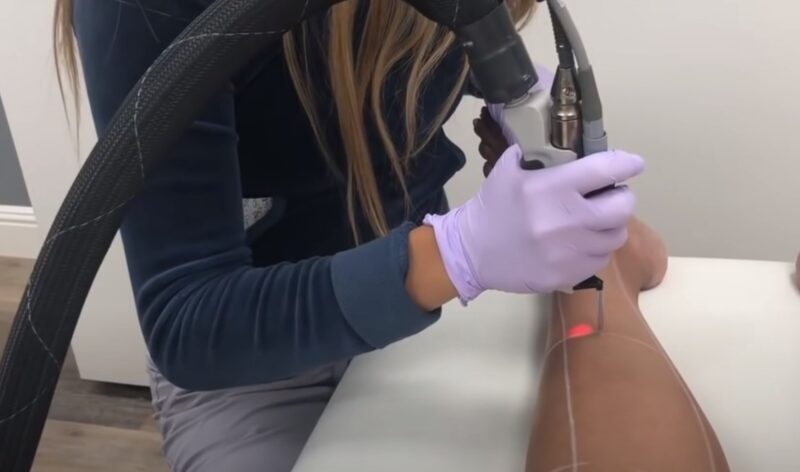
For those looking for more intensive solutions, professional treatments can offer promising results. These procedures should always be conducted by qualified professionals.
Laser Therapy
Lasers treatments are powerful tools in the realm of scar reduction. They work by removing the top layer of skin and promoting collagen production. There are different types of laser treatments, so a consultation with a dermatologist will help determine which is best suited for your scar type and skin needs.
Microneedling
Microneedling involves the use of tiny needles that create controlled injuries on the skin, prompting the skin to heal itself by producing more collagen. After the procedure, the skin typically appears red and may feel slightly tender.
As it heals, the increased collagen production can result in the scar becoming less noticeable.
| Aspect | Benefit |
|---|---|
| Speed of Results | Faster results compared to natural and over-the-counter remedies |
| Personalization | Tailored treatments based on individual scar type and skin needs |
| Advanced Methods | Access to advanced technologies and methods not available for home use |
Maintaining Skin Health
A holistic approach that combines scar treatments with overall leg skin health can provide the best results. Maintaining skin health can not only help reduce the appearance of scars but can also prevent new ones from forming.
Moisturize Regularly
Healthy, moisturized skin can improve elasticity and aid in scar healing. Dry skin can make scars more noticeable and can hinder the healing process. Opt for a high-quality moisturizer that suits your skin type. For particularly dry skin, creams containing hyaluronic acid or ceramides can be beneficial.
Applying the moisturizer right after showering can help lock in the moisture.
Sun Protection
Sun exposure can darken scars, making them more noticeable. Protecting your skin from harmful UV rays is crucial when trying to reduce the appearance of scars. Always apply sunscreen to your legs, especially if the scars are exposed.
If possible, cover the scars with clothing or use an umbrella when in direct sunlight. Remember that UV rays can penetrate clouds, so sun protection is necessary even on cloudy days.
Consistency is Key
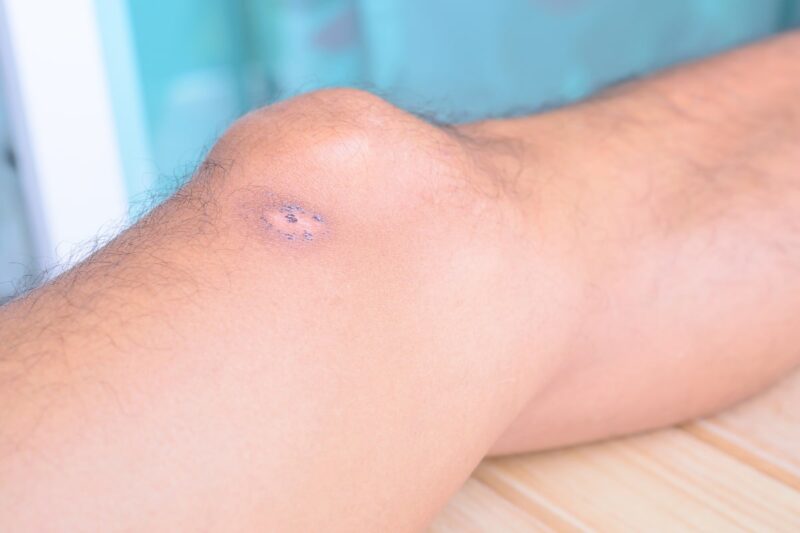
No matter which method or combination of methods you choose, consistency in treatment is paramount. Scars often take time to heal, and sporadic care might not yield the desired results.
Setting a Routine
Establishing a daily or weekly routine can make it easier to remember to apply treatments and can lead to better results. For natural remedies, it might be beneficial to apply them at the same time each day. For over-the-counter treatments, follow the manufacturer’s guidelines closely.
As scars can take time to improve, documenting the journey can be motivational. Taking periodic photos can help you see the progress. Using a journal or a specific app, keep notes about which treatments you’re using and any noticeable changes.
This can help in understanding which methods work best for you and motivate you to continue the treatment.
Prevention
It’s equally important to focus on prevention as it is on treatment. Preventing new scars from forming or existing scars from worsening can be a game-changer in maintaining flawless legs.
Immediate Wound Care
How you treat a wound can significantly influence the formation of scars later on. Prompt and appropriate care can minimize scar development.
- Clean the wound with mild soap and water to prevent infections.
- Keep the wound moist. Applying petroleum jelly can prevent the skin from drying out and forming a scab, which can lead to a scar.
- Protect the wound from direct sunlight, as UV rays can darken the healing skin, making potential scars more noticeable.
Healthy Lifestyle Choices
A balanced diet and staying hydrated can benefit the skin’s overall health. Nutrient-rich foods can promote faster healing and reduce the risk of scars.
- Consume foods rich in Vitamin C, Vitamin E, and zinc, which play crucial roles in skin healing.
- Drinking adequate water helps in keeping the skin hydrated and can aid in the healing process.
- Refrain from smoking, as it can reduce blood flow and delay wound healing, leading to more pronounced scars.
Different Scar Variants
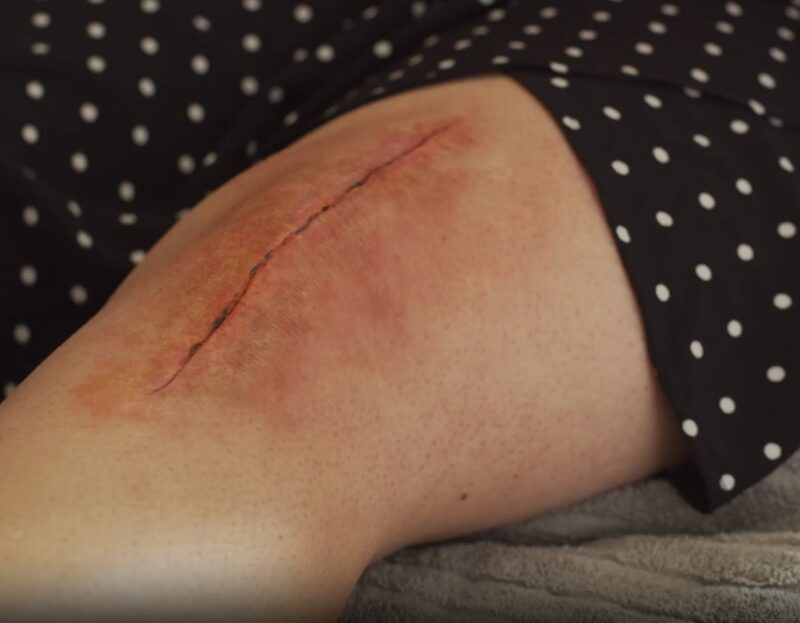
Recognizing the type of scar you have can tailor the treatment approach, making it more effective.
- Hypertrophic Scars
- These are raised scars that stay within the boundary of the wound. They might be red and can become itchy or painful.
- They can benefit from silicone gel sheets or pressure therapy.
- Keloid Scars
- These scars extend beyond the original injury and can continue to grow.
- They might be itchy, painful, or have a burning sensation.
- Steroid injections or laser therapy can be effective treatments.
- Atrophic Scars
- These scars are sunken or pitted, often resulting from acne or chickenpox.
- They form when underlying structures supporting the skin, like fat or muscle, are lost.
- Fillers or laser treatments can be beneficial in treating atrophic scars.
FAQs
How long does it usually take to see improvements in scar appearance?
The timeframe can vary widely depending on the treatment method, the age of the scar, and individual skin healing capabilities. While some treatments offer faster results, consistent care and patience are often required.
Are there any treatments that can completely remove scars?
While many treatments can significantly reduce the appearance of scars, it’s challenging to completely remove them. The goal is often to make them less noticeable or blend more seamlessly with the surrounding skin.
Is it better to cover a scar on the leg or let it breathe?
During the initial healing phase, it’s beneficial to keep the wound or scar covered to prevent infection and retain moisture. Once the scar is fully healed, allowing it to breathe can be beneficial, but it’s still important to protect it from excessive sun exposure.
How does massage help in scar healing?
Massaging a scar can help break down collagen bundles that make up the scar tissue, improving its flexibility and appearance. Regular gentle massage can also promote blood circulation, aiding in the healing process.
Can makeup be used to cover up scars on legs?
There are specially formulated concealers and foundations designed to cover scars and tattoos. Ensure you choose a product that matches your skin tone and set it with a setting powder or spray for longevity.
Summary
From nature’s offerings to cutting-edge medical procedures, there are multiple pathways to achieve more flawless legs. But beyond the physical aspect, it’s crucial to embrace the emotional journey, recognizing that scars are but chapters in one’s life story.
Remember, beauty isn’t just skin deep; it resonates from within and is reflected in the choices we make and the stories we tell. At our site, you can find numerous useful tips on numerous medical subjects.
